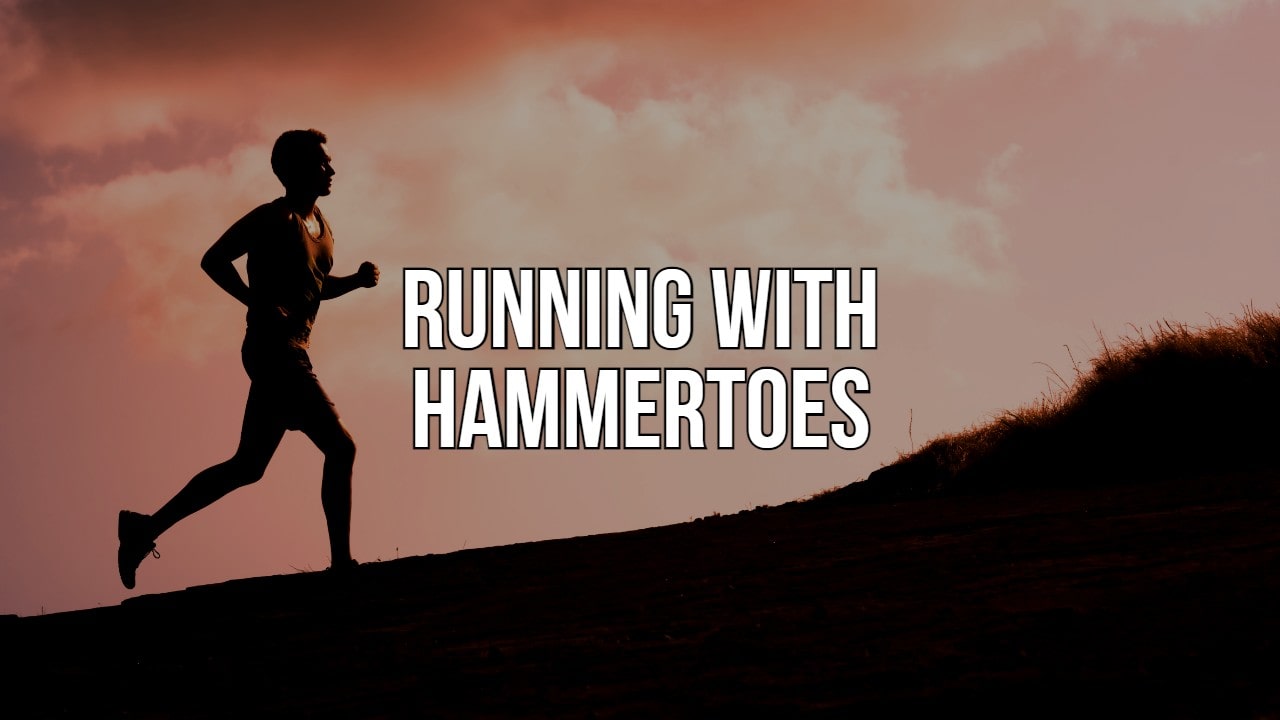Table of Contents
What Is a Hammer toe?
Hammertoe is a foot deform caused by an imbalance in the muscles, tendons, or ligaments that usually hold the toe straight. In this condition, the toe is bent at the middle joint, resembling a hammer.
The type of shoes you wear, foot structure, trauma, and specific disease processes can contribute to developing these deformities. (American Academy of Orthopaedic Surgeons)
Types of Hammertoes:
- Flexible hammertoes: The affected toes are still able to move in this type, as this type is the initial stage of developing hammertoes.
- Semi-rigid: In this type, hammertoes start to stiffen the toe movement.
- Rigid hammertoes: The tendons and soft tissues are found completely tightened which makes the hammertoe rigid and no longer moveable.
(American Podiatric Medical Association)
Hammertoes Vs Claw toe:
Hammertoe affects the toe’s second or middle joint, causing it to bend downward. It typically involves a single toe, most commonly the second toe. But, when it comes to the claw toe, it affects one or more of the little toes and can happen to all four of the toes. It can affect the middle and end toe joints and cause the toes to bend and curl under.
Symptoms Of Hammertoes
A hammer toe can be extremely painful, especially when you try to move it or walk or run while wearing the shoes. Some other prominent symptoms may also include:
- Toe joint that is getting rigid.
- Bent toe will be felt painful, usually at the top.
- The ball of your foot is becoming painful.
- Formation of calluses and corns at the top of your joint.
- The joint feels red, swollen, or has a burning sensation.
6 Risks That Can Cause Hammertoes
When your toe’s muscles are imbalanced, the tendon and joints are put under increased pressure, resulting in a hammertoe. Some causes of muscle imbalance include:
1. Family History
Genes are very important to study to see the risks of several diseases as well as disorders, a person inherited. If any of the family members has a past history of developing hammertoes, there may likely be risks of the development of hammertoes in that individual.
2. Age and Gender
Hammer toe is more common in older adults, particularly among women. In the 2013 study, half of the women participants ages 70 years or older had a lesser toe deformity.
According to a Malaysian 2021 cross-sectional study, young women who wear high heels to work are more likely to develop calluses, bunions, blisters, and hammertoes than women who wear other types of shoes.
3. Arch Of Foot
As a result of your foot type, you may be predisposed to developing hammertoes. Inflatable, flexible feet may develop hammertoes as they attempt to stabilize against a flattening arch. High arches can also cause hammertoes because the extensor tendons overpower the flexors.
4. Footwear
One of the biggest causes of hammertoe is not wearing the right shoes. Having a high heel or a toe box that is too tight can force your toes to bend or flex. In time, the muscles that help the toes straighten out become weakened and less effective. Eventually, even when wearing more spacious shoes, they are no longer able to straighten out.
5. Diabetes
People with diabetes are more likely to suffer complications from hammertoes due to pressure on their toes from neuromuscular diseases. Corns and other ulcerations are signs that pressure is being placed on the toes.
6. Past foot/Toe Injury
In general, a hammer toe does not result directly from an injury. But the American College of Foot and Ankle Surgeons (ACFAS) notes that earlier trauma to the toe may contribute to its development later on.
Can You Run With Hammertoes?
You should not be prevented from running because of your hammertoe unless it causes discomfort. Metatarsal pads and insoles can help you while running and prevent it to get worse.
Non-Surgical Options To Comfort Hammertoe Pain While Running
- Toe pads/toe crests.
- Metatarsal pads.
- Custom Molded Orthotics.
- Taping or moleskin.
- NSAIDs to decrease pain and inflammation.
Dealing With Hammertoe While Running
Just like stretching as a part of the warm-up is necessary before running to avoid injuries and muscle deformities, you should also do the same for your feet if you have a hammertoe.
Despite not being able to cure hammertoe, stretching can help to relax the surrounding muscles and ligaments. Take a look over some best stretching for your hammertoe feet:
- Extend your toes
- Curl your toes under
- Splay your toes as wide apart as possible
- Move each of your toes individually
- Pick up marbles with your toes
(Washington Foot and Ankle Sports Medicine)
Can Right Running Shoes Help Reduce Hammertoe Pain?
Of course yes. We have discussed above that footwear has a greater influence on developing hammertoes and other toe deformities. The proper footwear can make a huge difference in the health of your feet and how they feel.
Especially when you are stressing your toes while running, your footwear depth must be greater than two inches and shoes with wide toe boxes are better for people since they can rest their toes more comfortably.
Most high heels not only pinch the toes, but they put enormous pressure on the toes.
See, the best running shoes for hammertoes
Can You Stop A Hammer toe From Getting Worse?
There is a type of orthotic device called a Splint, which may help reduce the symptoms of hammer toe and prevent it from worsening. The American College of Foot and Ankle Surgeons reports that using a splint inside a shoe may help control muscle imbalances and tendons.
Is Surgery The Only Option To Fix Hammertoe?
Hammertoes do not always require surgery. They can be fixed in their initial stages with splints, surgical tapes, and other orthotics.
But if it does not help and hammertoes become stiff, and painful, and started limiting your activities, surgery is the only option. Because this leads the hammertoe to the immobile phase where the pain is extreme due to zero flexibility, as podiatrist Georgeanne Botek, DPM said. (Botek, 2019)
Can you run after hammer toe surgery?
Once you are done with the hammertoe surgery and you are running fan. You might have to ask the doctor already with that if you can run or not. and, how long after you can run but the main thing is don’t run too much right after the surgery. Whenever you are planning to run again, it’s crucial to start slow to reach where you left off.
Further, it may take some time to build up your endurance. Depending on the severity of your surgery, you may have to start with a walk/run program. It is important to listen to your body and give proper attention to wearing the right shoes, orthopedic shoes that have a special insert to help keep your toe in the correct position.
Take your pills on time, give a rest to your legs and properly follow the doctors routine will help you in coping out with that.

DPT, Jinnah Medical College.
Sports Injuries and Rehabilitation & Sports Nutrition
Martial Arts and Fitness Trainer
Senior Brown Belt – Kyokushinryu Karate, IKAK, Japan.

